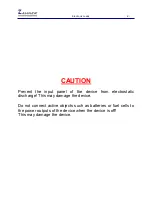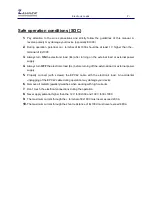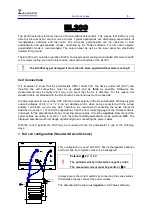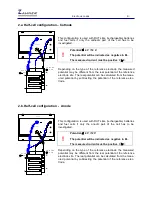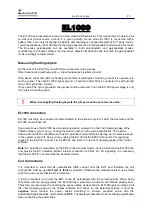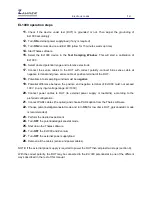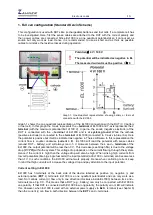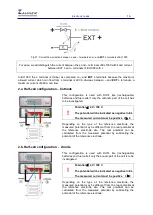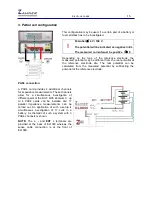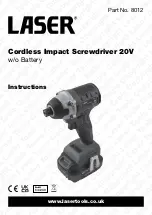
Electronic Loads
-
4-
Basics
Today, dynamic measurements on electrochemical objects are of great interest. Modern instruments
for impedance measurements, cyclic voltammograms and pulse response experiments provide a
broad frequency range from µHz to MHz. At the same time, they provide a huge impedance range
from µ
Ω
to G
Ω
. However, for most instruments there is one restriction left, they have a limited current
range of few Amperes. In the field of electrochemical power generation, for example, this is only
sufficient for “small” systems.
The electrochemical workstations of the Zennium family provide a current range of
±
4 A (
Zennium X
)
and
±
3 A (Zennium Pro) and measure impedances down to µ
Ω
. Therefore, we provide external
devices (
EL, PP-Series and XPOT
) which can extend the application field of the
Zennium
systems.
The electronic loads
EL300
and
EL1000
are designed as additional potentiostats to allow dynamic
investigations on technical systems up to 100 A (
EL300
) and 200 A (
EL1000
). Their main applications
are discharging tests on (rechargeable) batteries and fuel cells.
The electronic loads are easily integrated in the
Zennium
system using
EPC42
controller cards. All
functions are controlled directly from the Thales software. Up to 16 electronic loads may be controlled
by one
Zennium
system using up to 4
EPC42
cards.
EPC42
The
EPC42
is able to control up to 4 external devices like the
EL300/EL1000
, the
XPOT,
and the
PP201/211/241
. Up to four
EPC42
cards can be used for installing a total of 16 external devices in a
Zennium
system.
Each port provides analogue and digital interfaces for the communication of the external devices with
the
Zennium
system. The analogue part of the port feeds the device with the DC potential at a
resolution of 16 bit and the AC amplitude. Measured current and potential are sent from the external
device to the
Zennium
to be treated there in a same way as signals from the internal
Zennium
cards.
The
EPC42
has a bandwidth of 250 kHz.
A bi-directional serial communication line allows to digitally control the functions and measuring
ranges of external devices.
!
Plug or unplug external devices only when both, Zennium AND the external devices,
are switched off. Otherwise the devices may get damaged.
Selecting an external device
All external
Zennium
devices are directly controlled by the Thales software. Each device has a unique
device number which is identical with the
EPC42
port number. So, if a device is connected to
EPC
port 3, you address it with the device number 3. Device number “0” is reserved for the internal
potentiostats of the
Zennium
system.
If an
RMUX
(relay multiplexer) card is installed, the device numbers of the external devices
(ELs/PPs/XPOTs) start with 17, not with 1, because then the device numbers 1 to 16 are reserved for
the 16
RMUX
channels.



